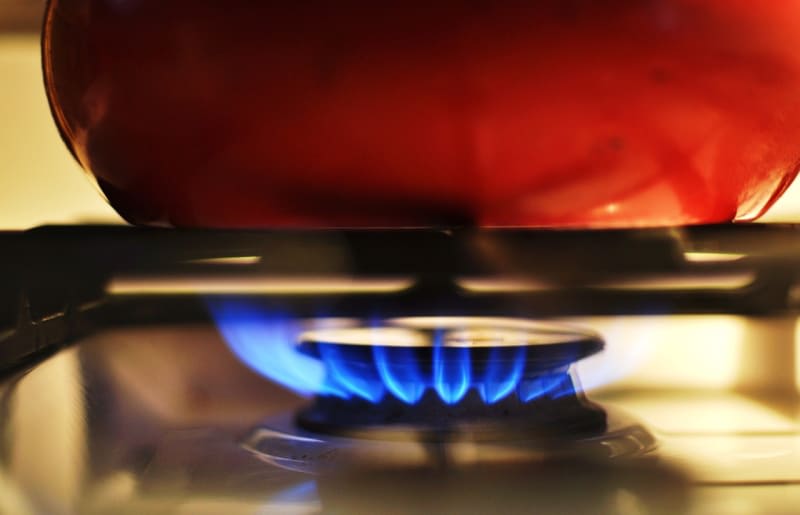How to Use a Gas Stove: A Comprehensive Guide
I. Introduction to Using a Gas Stove
Gas stoves are a popular choice for cooking due to their efficient heat control and versatility. Understanding how to use a gas stove safely and effectively is essential for any home cook. In this article, we will explore the basics of gas stove operation, the benefits of cooking with gas, and important safety measures to follow.
A. Exploring the Basics of Gas Stove Operation
Gas stoves operate by using natural gas or propane to ignite and produce a flame for cooking. They typically consist of burners, knobs for controlling heat intensity, an ignition system, and a gas supply.
B. Understanding the Benefits of Cooking with Gas
There are several benefits to cooking with a gas stove. Gas stoves provide instant heat, allowing for faster and more precise cooking. They also provide consistent heat distribution, making it easier to control the cooking process. Gas stoves are also more energy-efficient compared to electric stoves, as they heat and cool quickly.
II. Gas Stove Components and Safety Precautions
Familiarizing yourself with the components of a gas stove and following safety precautions is crucial for safe operation.
A. Familiarizing Yourself with Gas Stove Parts
Become familiar with the different parts of a gas stove. This includes the burners, knobs for controlling the heat, and the ignition system. It is also important to locate the gas supply line and the shut-off valve, which should be readily accessible in case of an emergency.
B. Following Essential Safety Guidelines
Follow essential safety guidelines when using a gas stove. Regularly check for gas leaks by sniffing around the stove for a distinct odor. Ensure that the kitchen is properly ventilated to prevent the buildup of carbon monoxide. Avoid using the stove if there is a strong gas odor or if you suspect a gas leak. In the event of a gas leak, immediately turn off the gas supply at the shut-off valve and evacuate the premises. Contact a professional for assistance.
III. Lighting the Gas Stove
Properly lighting the gas stove ensures safe operation and efficient cooking.
A. Preparing the Stove for Lighting
Before lighting the stove, ensure that the burner caps and grates are properly in place. Clean the stovetop to remove any debris or spills, and ensure it is dry to prevent slippage or flare-ups.
B. Using the Stovetop Ignition System
To ignite the gas stove, turn the knob for the desired burner to the ignition position. You should hear a clicking sound, indicating that the igniter is functioning properly. If the burner does not ignite after a few clicks, wait a few seconds and try again. If the igniter fails to work, you can use a long-reach lighter or a matchstick to safely light the burner.
IV. Adjusting Flame Intensity and Heat Settings
Mastering flame intensity and heat settings allows for precise control over cooking temperatures.
A. Controlling Flame Size and Intensity
To adjust the flame size and intensity, turn the corresponding knob for the desired burner. Turning the knob counterclockwise increases the flame height, while turning it clockwise decreases the flame height. Adjust the flame to achieve a low, medium, or high heat level, depending on your cooking needs.
B. Managing Heat Output for Cooking
Different dishes require varying levels of heat. Understanding the temperature settings on the knobs is important for achieving the desired cooking heat. Experiment with different flame sizes and heat settings to find the optimal temperature for your recipes.
V. Proper Cookware and Placement
Using appropriate cookware and properly placing it on the gas stove ensures efficient and safe cooking.
A. Selecting Appropriate Cookware
Choose cookware with flat bottoms and sturdy construction to ensure even heat distribution. Avoid using non-compatible materials that may melt or warp. Stainless steel, cast iron, and aluminum are common choices for gas stove cooking.
B. Placing Cookware on the Gas Stove
Center the cookware on the burner to ensure even heat distribution. Ensure that the cookware is stable and not at risk of tipping over during cooking. Avoid using oversized cookware that extends beyond the burner, as this can cause uneven heating and potential safety hazards.
VI. Safety Precautions and Maintenance
Following safety precautions and properly maintaining the gas stove is essential for safe and efficient operation.
A. Monitoring Flames and Ventilation
Regularly check the flames on the burners. A consistent blue flame indicates proper combustion. If the flames are yellow or flickering, it may indicate a problem with the gas supply or ventilation. Ensure adequate airflow and proper ventilation in the kitchen to prevent the buildup of carbon monoxide.
B. Cleaning and Proper Stove Maintenance
Regularly clean the burners and stovetop to remove food debris and spills. Be sure to turn off the gas supply and allow the stove to cool before cleaning. Additionally, schedule professional maintenance as needed to ensure the gas stove is functioning properly and safely.
In conclusion, using a gas stove involves understanding its components, following safety guidelines, and familiarizing yourself with ignition and flame adjustment. Proper cookware selection and placement ensure optimal cooking results. Regular monitoring of flames, ventilation, and cleaning are essential for safe and efficient operation. By following these steps and practicing safety precautions, anyone can master the use of a gas stove and enjoy the benefits of gas cooking, which provides quick and precise heat control for a variety of culinary tasks.
